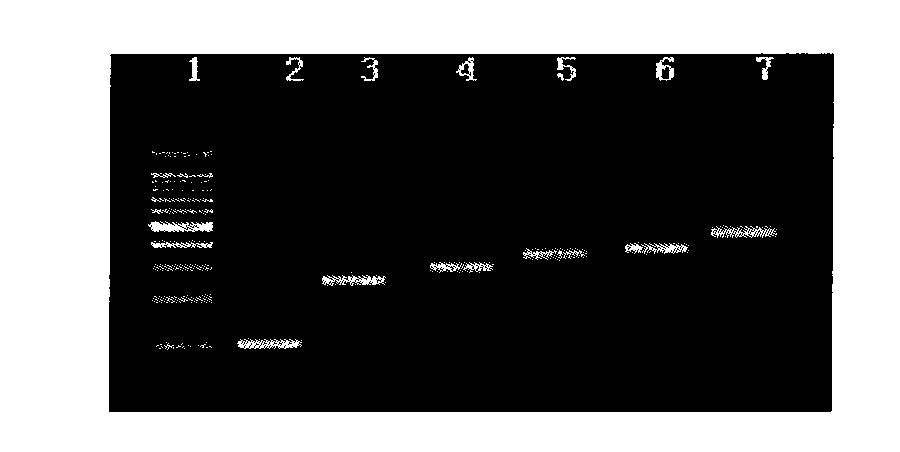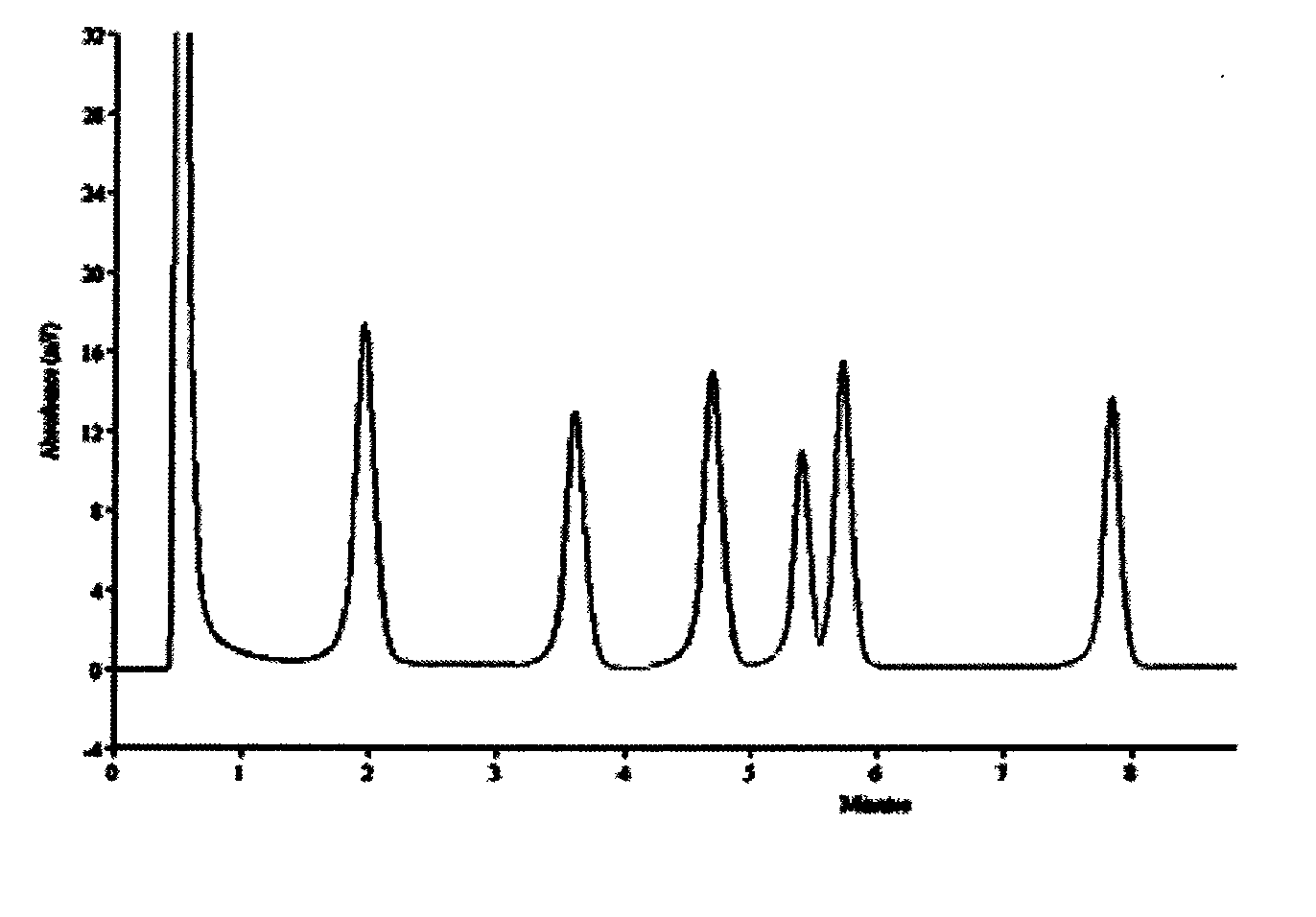Test kit and testing method for staphylococcus aureus toxin gene in food
A staphylococcus, golden yellow technology, applied in the directions of microorganism-based methods, biochemical equipment and methods, and microorganism determination/inspection, etc., to achieve the effects of short detection time, labor and financial saving, and simple operation.
- Summary
- Abstract
- Description
- Claims
- Application Information
AI Technical Summary
Problems solved by technology
Method used
Image
Examples
Embodiment 1
[0051] Embodiment 1, establishment of detection kit and detection method of staphylococcus aureus toxin gene in food
[0052] (1) Design, synthesis and kit assembly of primers, the primers are as follows:
[0053]
[0054]
[0055] On this basis, a kit for mPCR-DHPLC detection is designed:
[0056] The kit includes detection solution A and detection solution B:
[0057] Detection solution A contains 10mM Tris Cl, 50mM KCl, 25mM MgCl 2 , 2.5mM each of dNTP, 5U / μL of Taq DNA polymerase, and 10μM each of the six toxin gene primer pairs mentioned above: ETA, SEB, SEC, SEE, SEI and SEA;
[0058] Detection solution B contains 10mM Tris Cl, 50mM KCl, 25mM MgCl 2 , 2.5 mM each of dNTP, 5 U / μL of Taq DNA polymerase, and 10 μM each of the six toxin gene primer pairs of SEJ, ETB, TSST, SED, SEH and SEG.
[0059] (2) Establishment of mPCR-DHPLC detection method
[0060] This detection method uses the mPCR-DHPLC detection kit that the present embodiment establishes, comprises th...
Embodiment 2
[0084] Embodiment 2, multiple reaction system detection comparison test
[0085] PCR-electrophoresis and the PCR-DHPLC method established in Example 1 were used for detection and comparison.
[0086] This embodiment establishes two groups of composite PCR systems, the detection objects of the first composite PCR system include ETA, SEB, SEC, SEE, SEI, SEA genes; the detection objects of the second composite PCR system include ETASEJ, ETB, TSST, SED, SEH, SEG Gene.
[0087] The expected PCR amplification fragments of the six toxin genes of the first complex PCR system: ETA, SEB, SEC, SEE, SEI, and SEA are: 119bp, 257bp, 317bp, 350bp, 375bp, and 478bp; attached figure 1 As shown, mPCR-electrophoresis detection results are shown in the attached figure 2 Shown; mPCR-DHPLC test results are shown in the attached image 3 shown.
[0088] from by figure 1 with figure 2 It can be seen that when these 6 kinds of toxin genes are subjected to single PCR amplification and electr...
Embodiment 3
[0091] Embodiment 3, detection method specificity test
[0092] The reference bacterial strains listed in Table 1 were taken and detected according to the method established in Example 1.
[0093] Table 1
[0094]
[0095]
[0096]
[0097]Take the test strains listed in Table 1, extract the genomic DNA after culture, and establish the template library. Then, using these genomic DNAs as templates, the six toxin genes of ETA, SEB, SEC, SEE, SEI, and SEA in the first composite PCR system and SEJ, ETB, TSST, SED, SEH, The six toxin genes of SEG were used as target genes for mPCR-DHPLC analysis and detection using the conditions established in Example 1. The results showed that in the first multiplex PCR reaction system, only the ETA-producing Staphylococcus aureus strain had an ETA absorption peak at 2 min, and the other strains were all negative results; the SEB-producing Staphylococcus aureus strain had an SEB absorption peak at 3.6 min , other strains were all nega...
PUM
 Login to View More
Login to View More Abstract
Description
Claims
Application Information
 Login to View More
Login to View More - Generate Ideas
- Intellectual Property
- Life Sciences
- Materials
- Tech Scout
- Unparalleled Data Quality
- Higher Quality Content
- 60% Fewer Hallucinations
Browse by: Latest US Patents, China's latest patents, Technical Efficacy Thesaurus, Application Domain, Technology Topic, Popular Technical Reports.
© 2025 PatSnap. All rights reserved.Legal|Privacy policy|Modern Slavery Act Transparency Statement|Sitemap|About US| Contact US: help@patsnap.com



